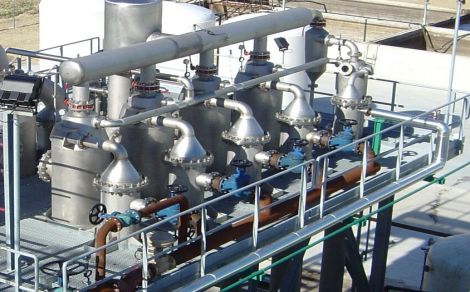- Home » Editorial » Hydraulics
Reasons for the growing interest in Zero Liquid Discharge technology

ZLD technology has been utilised in various markets around the world, including Europe, Australia, Canada, the Middle East and Mexico, but the biggest markets, and the biggest potential for expansion, can be found in the United States, China and India2.
The benefits and challenges of ZLD
In general terms, the use of ZLD reduces water pollution and augments water supply, but this is sometimes offset by high costs and energy consumption and in the past these factors have limited the uptake of the technology. Wastewater reuse minimises the volume and environmental risk of discharged wastewater, but also alleviates the pressures associated with the abstractionof freshwater, but these benefits have to be balanced against the economic and energy costs of implementing ZLD systems.
As water scarcity and environmental pollution around the world intensifies, ZLD becomes more feasible and widespread, and the relative costs of ZLD technology versus the alternatives (assuming alternatives even exist) are lowered.
Increasing the efficiency of ZLD
Separating all of the water out of the product requires large amounts of energy. It takes roughly six times more energy to evaporate water (latent heat) at its boiling point than the energy needed to actually bring it to that boiling point (sensible heat).
For that reason, ZLD processes often start with a separation process based on (reverse osmosis) membranes. Membrane separation does not require phase change / boiling. Electrical energy (pumping) is used to push water through the pores of the membrane and separate it from the dissolved solids.
Membrane can only work to bring the product up to a certain concentration. To achieve complete separation, evaporation / crystallization processes are needed for completing the process. As explained before, evaporation (due to the latent heat) is highly energy consuming. Therefore, it is wise to choose an evaporation process that involves ways of energy optimization, the most popular being:
Multistage evaporation: using the latent heat of the evaporated water as energy source in a next evaporation stage reduces the overall consumption of the boiler to the evaporation plant.
Thermal Vapour Recompression (TVR): evaporated steam is mixed with boiler steam. The reuse of the evaporate steam reduces the energy demand.
Mechanical Vapour Recompression (MVR): An MVR compressor (driven by an electrical motor) can be used to compress the evaporated steam, thus increasing its pressure, and use this steam as the energy input for the process. MVR compression is very efficient in terms of energy consumption.
Due to the factors outlined above, (multistage) vapour compression plants remain the main method employed for ZLD processing globally, with evaporation typically recovering around 95% of wastewater as distillate. Any remaining concentrate is then further treated physically or chemically to produce solid residues (such as crystals) and water. Evaporators used in ZLD systems are often run at lower pressures in order to reduce the boiling point of the liquid being treated.
Whatever kind of evaporator is used, heat exchangers have a crucial role to play in ZLD systems in reducing running costs by utilising heat from process water and other existing sources, and also recapturing heat at the end of the process and reusing it to boost the energy efficiency of the overall ZLD system.
-
PPMA 2025
23 September, 2025, 9:30 - 25 September, 2025, 16:00
NEC, Birmingham UK -
Advanced Engineering Show 2025
29 October, 2025, 9:00 - 30 October, 2025, 16:00
NEC, Birmingham UK










